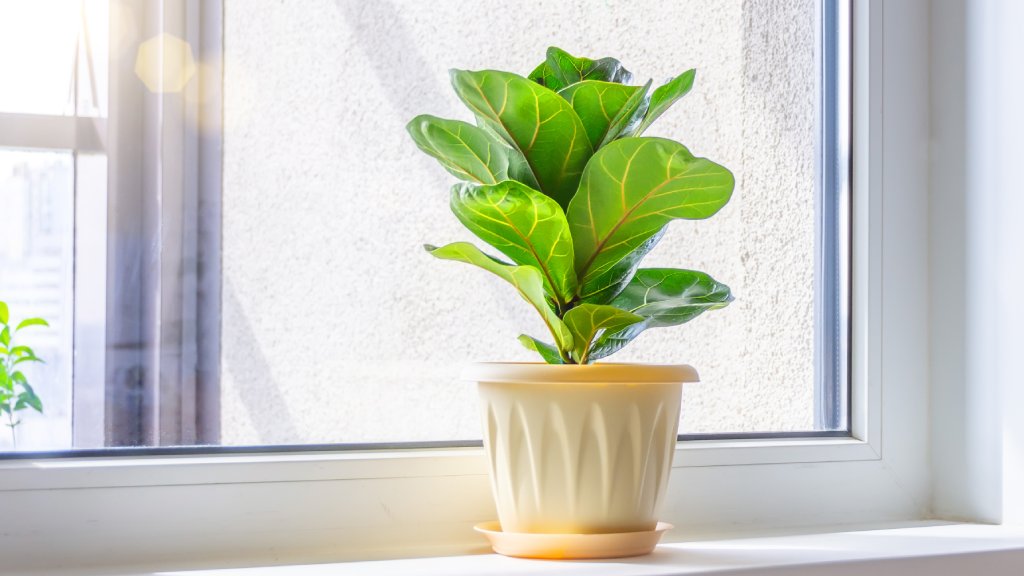Ficus Houseplants – How To Care For A Ficus Tree
Indoor ficus trees are a beautiful addition to your home’s decor but they do require some special care considerations.

The potted indoor ficus trees sold in garden stores are usually weeping fig (Ficus benjamina), but other Ficus species are also readily available like the fiddleleaf fig (Ficus lyrata). These popular plants have graceful spreading forms and dense canopies of dark leaves. Indoor ficus trees are much smaller than their wild cousins and have a wide range of form, height, and growth habits. Read on to learn general information on how to care for a ficus.
How to Care For a Ficus Tree
Care for indoor ficus trees varies slightly among species. Since the majority are weeping figs, we will use these plants as the basis for our care instructions.
Weeping figs have a reputation for being finicky, but they are fairly easy to care for if given the appropriate light, water, and cultural care. Indoor ficus trees are considered delicate because of their light sensitivity; if they are moved to an area with more or less light, they often drop their leaves. In time, new ones grow.
Water and Light Requirements
Most ficus trees enjoy bright indirect or filtered light with variegated varieties happily able to take medium light. Bright, direct light may result in scalding of the leaves and leaf loss. Ficus trees also cannot tolerate low temperatures or drafts. They need to be kept in temperatures above 60 degrees F. (16 C) and actually prefer temperatures above 70 degrees F. (21 C). Cold drafts from windows or doors will harm them, so make sure to place them somewhere where drafts will not be an issue.
Soil and Fertilizer Needs
Like so many houseplants, weeping figs require soil with excellent drainage. Use a medium that is both porous and fibrous, or make your own mix from three parts fertile to one part coarse sand and one part peat. Many grow weeping figs without fertilizer, but it’s best to use a water-soluble fertilizer every month or so during the growth period.
Humidity & Temperature
Weeping figs like warm temperatures, to 70 degrees F. at night and 85 (21 and 29 C.) during the day. For the best ficus plant care, provide high humidity, with 40% relative humidity set as the minimum for undisturbed growth.
Note that the more light and the warmer the temperature, the more humidity and water the tree requires. Regular misting or setting the ficus tree on a pebble tray filled with water is a great way to increase humidity. Cold drafts from windows or doors will harm ficus plants, so be sure to place them where drafts are not an issue.
Sign up for the Gardening Know How newsletter today and receive a free copy of our e-book "How to Grow Delicious Tomatoes".
Ficus Pests, Diseases & Problems
Weeping ficus can attract a number of pests, including scale, aphids, mealybugs, thrips and spider mites. “Sap” dripping from a ficus houseplant is actually honeydew from an invading pest,and is a sure sign of an infestation. Treating the plant with neem oil is a good way to handle any of these pest issues.
They are also subject to several diseases caused by bacteria, including leaf spots and crown gall, as well as some caused by fungus, like anthracnose and blight. As noted above, indoor ficus trees can drop foliage when the light or temperature in their environment changes. Leaf drop is a ficus tree’s standard reaction to stress, whether it’s from any of the following:
- Under or overwatering
- Low humidity
- Too little light
- Relocation or repotting
- Drafts
- Change in temperature (too hot or cold)
- Pests
Pruning, Repotting and Propagating Ficus Plants
Ficus plant care can include shaping or even hard pruning. The trees react well to this, but reduce water levels to severely pruned plants.
Weeping figs like to be a little rootbound. If the indoor plant gets too rootbound, you will notice smaller leaves and slowing growth. In that case, ficus care required repotting the plant in late winter or early spring. Propagate ficus species by air layering or tip cuttings.
Types of Ficus Trees
Weeping fig: Ficus benjamina. This graceful little tree has drooping branches.
Indian rubber plant: Ficus elastica. A tough, shorter houseplant with an erect stem and large leathery leaves.
Decora: Ficus elastica ‘Decora. The heavy leaves have prominent, depressed veins with ivory/red midribs.
Fiddleleaf fig: Ficus lyrata. An easy-to-grow fig with deep green waxy fiddle-shaped leaves.

Teo Spengler is a master gardener and a docent at the San Francisco Botanical Garden, where she hosts public tours. She has studied horticulture and written about nature, trees, plants, and gardening for more than two decades, following a career as an attorney and legal writer. Her extended family includes some 30 houseplants and hundreds of outdoor plants, including 250 trees, which are her main passion. Spengler currently splits her life between San Francisco and the French Basque Country, though she was raised in Alaska, giving her experience of gardening in a range of climates.

